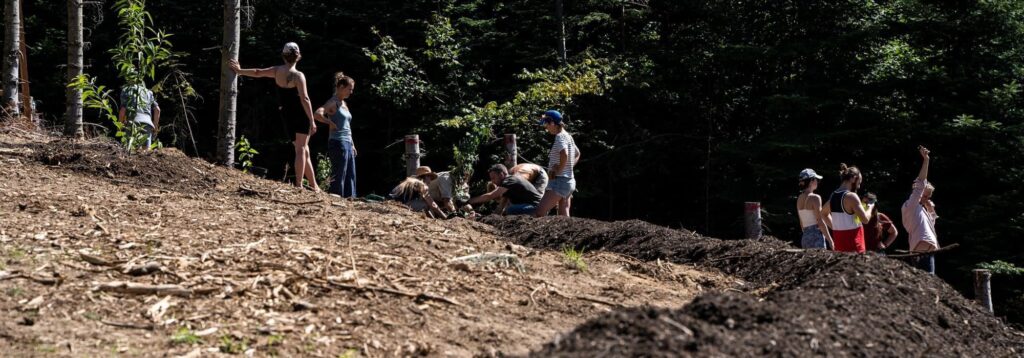We work to implement regenerative strategies in Himmelbjerggården's areas. This happens, among other things, in the construction and development of our edible forest garden and medicinal herb medicinal wheel, where various medicinal herbs are propagated and cultivated.
A two-hectare forest patch with a monoculture of spruce trees, which had been used for rock greens, was cleared in the spring of 2021. The clearing exposed the underlying landscape of south-facing slopes and hills, and this landscape is now with the addition of large amounts of compost, horse manure and organic material being transformed into an edible forest garden with a great diversity of fruit trees, shrubs and herbs.
At the same time, a small lake in the area was cleaned and re-established with soft brinks to support life in the lake. Water in the landscape, rainwater harvesting, plant-based water purification and aquaculture systems are important parts of land regeneration. In 2022, a stream was built to oxygenate and recirculate the water from the lake to improve and strengthen the biodiversity in and around the lake as well as the wildlife in the area.
Back in the 16th century, there were over 200 registered medicinal herbs in the area around Himmelbjerget. Many of these species, as well as knowledge about the qualities and workings of the plants, still exist, and we want to make it alive and accessible to the general population. That is why we have started the construction of a large medicinal herb garden on a former grassy area. The old species are collected here and propagated into seeds, and through the garden we share knowledge about the plants' qualities and use throughout history.

